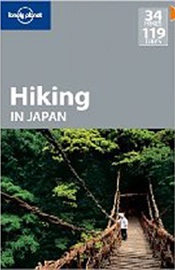The following is a translation of an interview conducted with Katsumi Shozugawa, an Associate Professor and Researcher at The University of Tokyo Graduate School of Arts and Sciences, which appeared in the January 2012 issue of Yama-To-Keikoku Magazine, a monthly outdoor magazine published in Japanese. This translation has been done with the consent of the magazine and should be of interest to hikers in Japan who can’t read Japanese. The opinions expressed here reflect those of Mr. Shozugawa and not of Yama-to-Keikoku or Hiking in Japan.
Question 1: Aren’t the radiation levels in mountains streams high?
Recently we tested Karasugawa river (on Mt. Adatara) and found that above Karasugawa bridge radiation levels varied from 0.05 microsieverts/hour* to 0.312 microsierverts/hour. However, at the bridge level at the river embankment the readings were 0.184 and decreased to 0.176 at the surface of the river. From this we can see that because of wind and rain, soil or leaves containing radioactive cesium have been transported, the speed of which varies according to region. For this reason, over time the areas which have previously had a high air dose rate can fluctuate. In this way, due to the fact that environmental conditions are constantly changing, it’s difficult to accurately predict whether mountain streams have high or low levels of radiation.
Question 2: Are there any radiation hotspots in the mountains?
Yes there are. This time approximately 0.02 microsieverts/hour was observed on a forest road at the edge of a gully. We also measured at the base of the gully and found readings nearly double what was found at the forest road. When you take a rest during your hike, it’s best to avoid these types of gullies where mud and runoff have accumulated, as well as areas with large piles of rain-transported foliage.
Question 3: Is it ok to take home fallen leaves or soil from the mountains?
It has been reported in the news that fallen leaves have contained a high level of contamination, but if you want to take home one leaf as a memento, it shouldn’t be a problem. However, you should refrain from taking away large quantities of foliage as well as rustling through large piles of fallen leaves.
Question 4: Since the snow season has arrived, what kind of radioactive effect will there be?
Since snow will cover the land, you won’t need to worry about flying radioactive particles or the risk of internal radiation exposure. In addition, snow has a shielding effect against radiation, depending on the density of the snow. We can expect a 30 to 40% reduction in radioactive emissions in compacted snow (such as those in groomed ski resorts). If the snow has accumulated over 1 meter in depth, however, then it is thought there will be a full shielding effect. Since fresh snowfall has a low risk of contamination, it should not be a problem to drink snowmelt.
Question 5: Is it ok to gather and eat mushrooms from the mountains?
There hasn’t been adequate testing, so you should not eat wild mushrooms gathered in the forest. In the mountains, there is a high likelihood for radioactive contamination of kinoko mushrooms, chestnuts, freshwater fish, river crabs, wild boar and such. Since the mountainous landscape is extremely diverse, even small changes in location can result in varying levels of contamination. Viewing wild mushrooms is ok, but you should refrain from picking and eating them.
Question 6: What should you do if you fall and injure yourself, getting dirt into your open wound?
There is a danger that radioactive materials attached to soil could directly enter your bloodstream, which is thought to be more dangerous than direct inhalation or drinking contaminated water. In order to decrease internal radiation exposure, wounds should be washed with water as quickly as possible. After washing, the wound should be wrapped with a bandage in order to prevent dust and dirt from reentering the wound. It is safer to use a hydrocolloid dressing (such as a kizu power pad) to help keep air out.
Question 7: Is it safe to drink from the mountain streams and rivers?
Since radioactive cesium has a positive charge, it is easily bonded to clay particles containing a negative charge. Once this happens, it is thought that there is a low chance of these bound particles dissolving in water. This being the case, as long as Iodine 131 is not emitted, there shouldn’t be a worry of contamination of underground water sources. Since there is a danger of contamination in the dirt riverbeds, you should avoid ingesting dirt particles when drinking water from streams. Instead, water should be filtered with a portable water filter.
Question 8: Are there any precautions you should take after finishing your hike?
At the trailhead, please clean off all dirt that has stuck to hiking boots, clothing, and your backpack. When doing this, be sure not to inhale any of the brushed off dust. Since volcanic soil can contain especially strong acids and alkaline metals, you should wash off your boots immediately after finishing your hike. If you don’t, the rubber and leather can deteriorate rather quickly. Regardless of whether there is radioactive contamination or not, it’s my recommendation to promptly clean off everything before returning home.
*Read here for more information regarding measurements of radiation.






